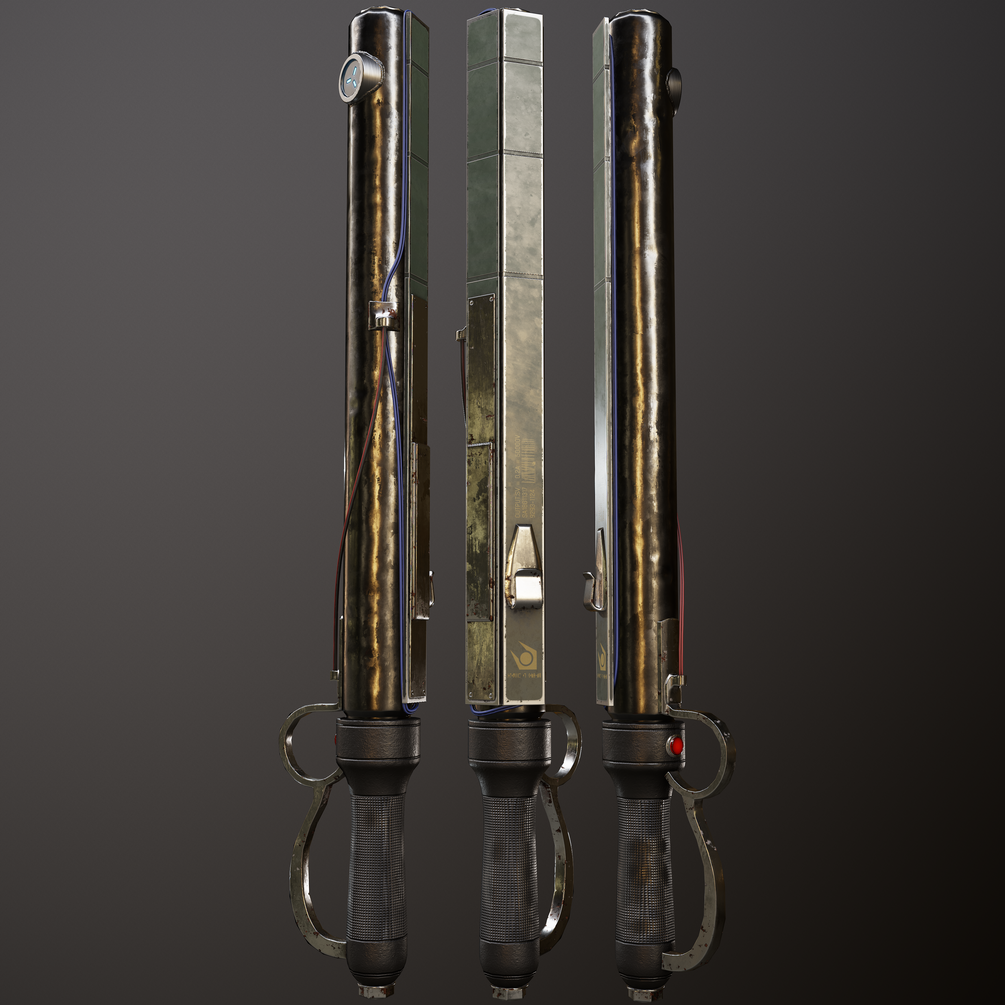CV-1000 | Early Stun-Baton
CV-1000 Stun Baton
Civil Protection Series | First-Issue Enforcement Tool | Generation One Compliance Device
The CV-1000 Stun Baton represents the earliest standard-issue compliance tool deployed by Civil Protection units during their global emergence following the Combine’s ascension. Based on crude pre-war law enforcement designs, the CV-1000 was rapidly developed by Combine sub-manufacturing arms to serve as an accessible yet brutal tool of direct population control.
Design and Construction
At its core, the CV-1000 is a reinforced melee device consisting of a rubber-insulated alloy handle fused with a conductive metal shaft, enhanced by a shock-guarded grip ring that shields the internal activation switch. This guard not only prevents accidental discharges but also mitigates disarmament in close-quarters combat, allowing a Civil Protection unit to maintain a firm grip even during aggressive engagements.
The striking end of the baton is built from densified Combine composite plating — both electrically conductive and structurally resistant to fracture. Basic internal wiring channels a constant high-voltage output from a compact power cell embedded in the handle, enabling instantaneous current transfer upon contact with a target.
Unlike later-generation models, the CV-1000 lacks modular voltage control or impact dampeners. It delivers full charge output with each strike, regardless of the situation. This crude yet effective design was favored during the earliest crackdowns, where displays of absolute force served both tactical and psychological objectives.
Operational Use and Public Response
While later batons would introduce regulated compliance settings to better serve across variable threat levels, the CV-1000 was not designed with restraint in mind. A single active strike could incapacitate most unarmored targets instantly, and two consecutive blows were typically sufficient to render even hardened resisters unconscious or immobile.
Due to its lack of safety modulation, many early detainees referred to it grimly as "the Re-Educator." Reports from relocated sectors describe intense neuro-muscular disruption, involuntary collapse, and memory blackouts following exposure. Civil Protection logs indicate that excessive use occasionally resulted in neurological damage, cardiac distress, or death — though such outcomes were categorized internally as “acceptable collateral for optimal behavioral compliance.”
As time passes and newer-generation stun batons are in development, the CV-1000 is planned to be phased out in frontline urban centers. However, it is expected to remain in deployment within less stabilized or lower-priority sectors, where its raw intimidation factor and proven durability continue to serve the interests of Civil Protection doctrine.

